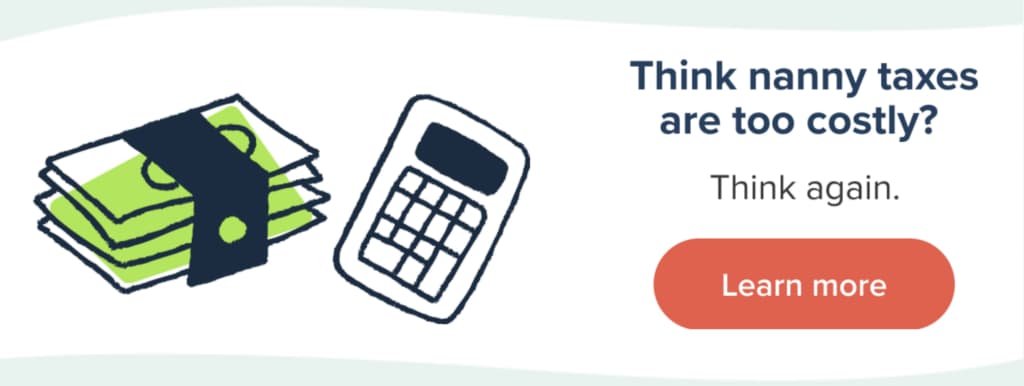In-home care is a large expense for families with child care and senior care needs. But for the 2021 tax year, the new American Rescue Plan law recently signed by the President should provide a significant boost to tax breaks already available to most families. We want to make sure we cover this topic in as much detail as we can, so follow along or skip ahead for information about:
Changes to your Dependent Care Account for 2021
This type of flexible spending account (FSA) is offered by most companies during Open Enrollment and usually has a $5,000 limit. But the American Rescue Plan increases the expense limit to $10,500 for the 2021 year, which allows you to pay for more of your care expenses pre-tax. This means whatever money you put into your FSA will not have Social Security, Medicare, federal income taxes or state income taxes applied to it. Depending on where you live and how much money you make, we estimate you’ll save 35-46% on the money you put into your FSA. Assuming you have at least $10,500 in care expenses, maxing out your FSA will now save you between $3,700-$4,800.
Changes to the Child and Dependent Care Tax Credit for 2021
Families without access to a Dependent Care Account could always fall back on the Child and Dependent Care Tax Credit for a smaller tax savings. This tax break hasn’t been increased since 2003, but the American Rescue Plan boosts it for 2021 in the following ways:
Increasing the expense limit from $3,000 to $8,000 for families with 1 dependent.
Increasing the expense limit from $6,000 to $16,000 for families with 2 or more dependents.
Adjusting the tax savings based on your family’s adjusted gross income (AGI).
50% for households under $125K AGI.
50%-21% for households with an AGI between $125K-$185K. The tax savings drops 1% for every additional $2,000 in AGI for this tax bracket.
20% for households with an AGI between $186K-$400K.
20%-1% for households with an AGI between $400K-$440K. The tax savings drops 1% for every additional $2,000 in AGI for this tax bracket.
Currently, the vast majority of families get a 20% savings on their care expenses, so being able to apply more expenses to this tax credit is already a boost. But if your AGI is $185,000 or less in 2021, you get that advantage, plus a higher percentage in savings.
How to maximize your tax breaks to save the most money in 2021
Your care situation will determine what tax breaks to take. Remember that if you have two or more dependents, you have up to $16,000 in care expenses to apply to tax breaks. That means you could potentially put $10,500 into your FSA and use the remaining $5,500 in the Child and Dependent Care Tax Credit. Consult the following chart to see how much in tax breaks you could potentially earn:
|
1 Dependent
|
Tax Credit
|
Dependent Care FSA
|
|
|---|---|---|---|
|
AGI < $125K
|
$4,000
|
$3,675
|
|
|
AGI $125-$185K
|
$2,800^
|
$4,200
|
|
|
AGI $185-$400K
|
$1,600
|
$4,410
|
|
|
AGI $400-$440K
|
$800*
|
$4,620
|
|
|
AGI > $440K
|
$0
|
$4,830
|
|
|
|
|
|
|
|
2+ Dependents
|
Tax Credit
|
Dependent Care FSA
|
Both Tax Breaks
|
|
AGI < $125K
|
$8,000
|
$3,675
|
$6,425
|
|
AGI $125-$185K
|
$5,600^
|
$4,200
|
$6,125
|
|
AGI $185-$400K
|
$3,200
|
$4,410
|
$5,510
|
|
AGI $400-$440K
|
$1,600*
|
$4,620
|
$5,170
|
|
AGI > $440K
|
$0
|
$4,830
|
N/A
|
^ Assumes an average 35% tax credit as a median for this income bracket
* Assumes an average 10% tax credit as a median for this income bracket
Keep in mind that we’re estimating what your marginal tax rate is when calculating your potential FSA savings. You’ll need to look at your past tax returns or speak with your accountant to get an exact number.
How the increase in tax breaks makes legal pay a less expensive option than under the table
Families can only take advantage of the tax breaks we just laid out if they’re paying their caregiver on the books. And since the American Rescue Plan increases tax breaks so dramatically for the 2021 tax year, it’s highly possible that you will save money this year. Let’s assume you have one child and hired a nanny for $25,000:
| Wages before taxes | $25,000 |
| Taxes and using our HomePay service | $3,500 |
| Cost before tax breaks | $28,500 |
| Savings from your FSA | $4,200 |
| Total cost for hiring your nanny | $24,300 |
|---|
In this scenario, you come out $700 ahead and HomePay takes care of your nanny’s payroll and your household employment tax filings for the year. But let’s go a step further and say you have two children and hire a nanny for $40,000. Here’s how the same scenario plays out:
| Wages before taxes | $40,000 |
| Taxes and using our HomePay service | $5,000 |
| Cost before tax breaks | $45,000 |
| Savings using both tax breaks | $5,510 |
| Total cost for hiring your nanny | $39,490 |
|---|
So even with accumulating more taxes due to higher wages paid to the nanny, you’re still saving $510 for the year over those risking to pay under the table.
The American Rescue Plan gives most families the opportunity to cut into their care expenses and do it in a way that benefits their caregiver. Remember, your employee cannot receive a stimulus check or qualify for unemployment benefits if they aren’t paid on the books. So everything we’ve covered in this article is really a win-win for all parties involved. We encourage you to contact our office today to run a specific budget scenario and let us help you get your caregiver’s payroll started and work toward maximizing your 2021 tax savings.
Next Steps:

